Dynamic Loading Characteristics of Cemented Paste Backfill with Recycled Rubber
Abstract
:1. Introduction
2. Materials and Methods
2.1. Materials
2.1.1. Rubber
2.1.2. Tailings
2.1.3. Cement
2.2. Methods
2.2.1. Uniaxial Compressive Strength Test
- (a)
- Polish the upper surface of the specimen required for the UCS test so that the upper and lower surfaces are parallel, to ensure that the stress distribution of the specimen is balanced during the process of loading;
- (b)
- Adjust the bearing head so that the upper part of the specimen and the testing machine are fully fitted, to ensure that the specimen is evenly stressed. Zeroing of the parameters is carried out using the control system;
- (c)
- Start the experiment and carry out a uniaxial compression test on the specimen at a loading speed of 0.2 mm/min until the specimen is damaged;
- (d)
- Record the experimental data, draw the stress–strain process curve of the specimen, and calculate the UCS of the specimen. The calculation formula is shown in Equation (1):
2.2.2. Split-Hopkinson Pressure Bar Test
- (1)
- Experimental Principle
- (a)
- The stress wave in the bar is a one-dimensional stress wave. This condition can be achieved by controlling the dimensions of the bar, and, typically, the bars are designed with the same diameter.
- (b)
- To minimize wave distortion caused by dispersion, the diameters of the SHPB test bars and the specimen should not be too large compared with the wavelength of the applied load pulse.
- (c)
- The stress uniformity assumption is satisfied within the specimen, meaning that the stress transmitted within the specimen is uniform in magnitude from the perspective of the specimen’s scale.
- (2)
- Test apparatus
2.2.3. Preparation of Specimen
- (a)
- The raw materials were weighed according to the design table, as shown in Table 2.
- (b)
- The solid materials were poured into a mixing container and stirred at a speed of 75 r/min for 2 min.
- (c)
- Water was poured into the mixing container and stirred at a speed of 75 r/min for 5 min.
3. Results and Analysis
3.1. Dynamic Compressive Strength of RCPB
3.2. Dynamic Strength Enhancement Factor and Strain Rate Effect
3.3. Peak Dynamic Load Strain of RCPB
3.4. Dynamic Load Elastic Modulus of RCPB
4. Conclusions
- (1)
- Under identical impact velocities, the dynamic compressive strength of rubber-doped filling bodies is reduced compared with those without rubber. As the rubber content increases, the rate at which the dynamic compressive strength decreases becomes slower.
- (2)
- As the rubber content rises, the dynamic strength enhancement factor of RCPB typically follows a trend of first decreasing and then slightly increasing. This is due to the varying performances of rubber content under dynamic loading conditions. Additionally, the dynamic compressive strength of rubber-filled bodies increases with an increase in the average strain rate. For CPB without rubber, when the average strain rate increases from 40.16 s−1 to 118.55 s−1, the dynamic strength increases by 108%. With an increasing impact speed, the dynamic compressive strength of RCPB increases. When the rubber content is 4%, the dynamic strength increases by a maximum of 213%.
- (3)
- Rubber can increase the elastic deformation capacity of RCPB, which means the inclusion of rubber improves the impact resistance of RCPB. However, this improvement is not infinite, indicating that there is a limit to the deformation capacity achieved through the addition of rubber. The findings of this study provide both invaluable information and industrial applications for the efficient management of solid waste, based on sustainable development and the circular economy.
Author Contributions
Funding
Data Availability Statement
Conflicts of Interest
References
- Feng, X.; Liu, J.; Chen, B.; Xiao, Y.; Feng, G.; Zhang, F. Monitoring, warning, and control of rockburst in deep metal mines. Engineering 2017, 3, 538–545. [Google Scholar] [CrossRef]
- Xia, Z.; Yuan, H.; Li, H.; Yu, X.; Fang, X.; Huang, S. Energy Transfer and Damage Evolution Process Research of Ore Rock-Filling Body under the Blasting Load. Minerals 2022, 12, 1362. [Google Scholar] [CrossRef]
- Hu, Y.; Li, K.; Zhang, B.; Han, B. Development of Cemented Paste Backfill with Superfine Tailings: Fluidity, Mechanical Properties, and Microstructure Characteristics. Materials 2023, 16, 1951. [Google Scholar] [CrossRef] [PubMed]
- Yang, F.; Wu, F.; Yang, B.; Li, L.; Gao, Q. Preparation and performance of composite activated slag-based binder for cemented paste backfill. Chemosphere 2022, 309, 136649. [Google Scholar] [CrossRef] [PubMed]
- Song, X.; Hao, Y.; Wang, S.; Zhang, L.; Liu, W.; Li, J. Mechanical properties, crack evolution and damage characteristics of prefabricated fractured cemented paste backfill under uniaxial compression. Constr. Build. Mater. 2022, 330, 127251. [Google Scholar] [CrossRef]
- Zhang, F.; Li, Y.; Zhang, J.; Gui, X.; Zhu, X.; Zhao, C. Effects of slag-based cementitious material on the mechanical behavior and heavy metal immobilization of mine tailings based cemented paste backfill. Heliyon 2022, 8, e10695. [Google Scholar] [CrossRef] [PubMed]
- Zhao, Y.; Wu, P.; Qiu, J.; Guo, Z.; Tian, Y.; Sun, X.; Gu, X. Recycling hazardous steel slag after thermal treatment to produce a binder for cemented paste backfill. Powder Technol. 2022, 395, 652–662. [Google Scholar] [CrossRef]
- Chen, X.; Shi, X.; Zhou, J.; Li, E.; Qiu, P.; Gou, Y. High strain rate compressive strength behavior of cemented paste backfill using split Hopkinson pressure bar. Int. J. Min. Sci. Technol. 2021, 31, 387–399. [Google Scholar] [CrossRef]
- Xue, G.; Yilmaz, E.; Feng, G.; Cao, S.; Sun, L. Reinforcement effect of polypropylene fiber on dynamic properties of cemented tailings backfill under SHPB impact loading. Constr. Build. Mater. 2021, 279, 122417. [Google Scholar] [CrossRef]
- Libos, I.L.S.; Cui, L.; Liu, X. Effect of curing temperature on time-dependent shear behavior and properties of polypropylene fiber-reinforced cemented paste backfill. Constr. Build. Mater. 2021, 311, 125302. [Google Scholar] [CrossRef]
- Chakilam, S.; Cui, L. Effect of polypropylene fiber content and fiber length on the saturated hydraulic conductivity of hydrating cemented paste backfill. Constr. Build. Mater. 2020, 262, 120854. [Google Scholar] [CrossRef]
- Yu, Z.; Wang, Y.; Li, J. Performance Investigation and Cost-Benefit Analysis of Recycled Tire Polymer Fiber-Reinforced Cemented Paste Backfill. Polymers 2022, 14, 708. [Google Scholar] [CrossRef]
- Guo, Z.; Qiu, J.; Kirichek, A.; Zhou, H.; Liu, C.; Yang, L. Recycling waste tyre polymer for production of fibre reinforced cemented tailings backfill in green mining. Sci. Total Environ. 2024, 908, 168320. [Google Scholar] [CrossRef] [PubMed]
- Yang, B.; Wang, X.; Gu, C.; Yang, F.; Liu, H.; Jin, J.; Zhou, Y. The Failure Mechanical Properties of Cemented Paste Backfill with Recycled Rubber. Materials 2023, 16, 3302. [Google Scholar] [CrossRef]
- Suddeepong, A.; Buritatum, A.; Hoy, M.; Horpibulsuk, S.; Takaikaew, T.; Horpibulsuk, J.; Arulrajah, A. Natural Rubber Latex–Modified Concrete Pavements: Evaluation and Design Approach. J. Mater. Civ. Eng. 2022, 34, 04022215. [Google Scholar] [CrossRef]
- Chu, L.; Wang, S.; Li, D.; Zhao, J.; Ma, X. Cyclic behaviour of beam-column joints made of crumb rubberised concrete (CRC) and traditional concrete (TC). Case Stud. Constr. Mater. 2022, 16, e867. [Google Scholar] [CrossRef]
- Su, Q.; Xu, J. Durability and mechanical properties of rubber concrete incorporating basalt and polypropylene fibers: Experimental evaluation at elevated temperatures. Constr. Build. Mater. 2023, 368, 130445. [Google Scholar] [CrossRef]
- Zhang, Y.; Zhang, S.; Jiang, X.; Zhao, W.; Wang, Y.; Zhu, P.; Yan, Z.; Zhu, H. Uniaxial tensile properties of multi-scale fiber reinforced rubberized concrete after exposure to elevated temperatures. J. Clean Prod. 2023, 389, 136068. [Google Scholar] [CrossRef]
- Yu, Y.; Jin, Z.; Shen, D.; An, J.; Sun, Y.; Li, N. Microstructure evolution and impact resistance of crumb rubber concrete after elevated temperatures. Constr. Build. Mater. 2023, 384, 131340. [Google Scholar] [CrossRef]
- Gao, X.; Yang, J.; Zhu, H.; Xu, J. Estimation of rubberized concrete frost resistance using machine learning techniques. Constr. Build. Mater. 2023, 371, 130778. [Google Scholar] [CrossRef]
- Zhou, X.; Xie, Y.; Long, G.; Zeng, X.; Li, J.; Li, N.; Wang, F.; Abdullahi Umar, H. Influence of end friction confinement on dynamic mechanical properties and damage evolution of concrete by coupled DEM-FDM method. Eng. Fract. Mech. 2023, 281, 109150. [Google Scholar] [CrossRef]
- Chen, J.; Gu, S.; Zhou, X. The effects of weak interlayers on the dynamic mechanical properties and failure behaviours of rocks: A combined numerical and experimental analysis. Int. J. Impact Eng. 2023, 180, 104680. [Google Scholar] [CrossRef]
- Faraj, R.H.; Ahmed, H.U.; Rafiq, S.; Sor, N.H.; Ibrahim, D.F.; Qaidi, S.M.A. Performance of Self-Compacting mortars modified with Nanoparticles: A systematic review and modeling. Clean. Mater. 2022, 4, 100086. [Google Scholar] [CrossRef]
- Han, Z.; Li, D.; Li, X. Dynamic mechanical properties and wave propagation of composite rock-mortar specimens based on SHPB tests. Int. J. Min. Sci. Technol. 2022, 32, 793–806. [Google Scholar] [CrossRef]
- Ali Ahmed, D.; Bahroz Jumaa, G.; Khalighi, M. Mechanical properties and shear strength of rubberized fibrous reinforced concrete beams without stirrups. Constr. Build. Mater. 2022, 350, 128796. [Google Scholar] [CrossRef]
- Walid, M.; Abdelrahman, A.; Kohail, M.; Moustafa, A. Stress—Strain behavior of rubberized concrete under compressive and flexural stresses. J. Build. Eng. 2022, 59, 105026. [Google Scholar] [CrossRef]
- Feng, G.; Wang, Z.; Qi, T.; Du, X.; Guo, J.; Wang, H.; Shi, X.; Wen, X. Effect of velocity on flow properties and electrical resistivity of cemented coal gangue-fly ash backfill (CGFB) slurry in the pipeline. Powder Technol. 2022, 396, 191–209. [Google Scholar] [CrossRef]
- Jiang, H.; Fall, M.; Yilmaz, E.; Li, Y.; Yang, L. Effect of mineral admixtures on flow properties of fresh cemented paste backfill: Assessment of time dependency and thixotropy. Powder Technol. 2020, 372, 258–266. [Google Scholar] [CrossRef]
- Carvalho Eugênio, T.M.; Francisco Fagundes, J.; Santos Viana, Q.; Pereira Vilela, A.; Farinassi Mendes, R. Study on the feasibility of using iron ore tailing (iot) on technological properties of concrete roof tiles. Constr. Build. Mater. 2021, 279, 122484. [Google Scholar] [CrossRef]
- Qaidi, S.M.A.; Dinkha, Y.Z.; Haido, J.H.; Ali, M.H.; Tayeh, B.A. Engineering properties of sustainable green concrete incorporating eco-friendly aggregate of crumb rubber: A review. J. Clean Prod. 2021, 324, 129251. [Google Scholar] [CrossRef]
- Zhang, S.; Yang, L.; Ren, F.; Qiu, J.; Ding, H. Rheological and mechanical properties of cemented foam backfill: Effect of mineral admixture type and dosage. Cem. Concr. Compos. 2020, 112, 103689. [Google Scholar] [CrossRef]
- Choobbasti, A.J.; Samakoosh, M.A.; Kutanaei, S.S. Mechanical properties soil stabilized with nano calcium carbonate and reinforced with carpet waste fibers. Constr. Build. Mater. 2019, 211, 1094–1104. [Google Scholar] [CrossRef]
- Kutanaei, S.S.; Choobbasti, A.J. Effects of nanosilica particles and randomly distributed fibers on the ultrasonic pulse velocity and mechanical properties of cemented sand. J. Mater. Civ. Eng. 2017, 29, 04016230. [Google Scholar] [CrossRef]
- Kolsky, H. An investigation of the mechanical properties of materials at very high rates of loading. Proc. Phys. Soc. Sect. B 1949, 62, 676. [Google Scholar] [CrossRef]
- Cao, Y.; Li, L.; Liu, M.; Wu, Y. Mechanical behavior of FRP confined rubber concrete under monotonic and cyclic loading. Compos. Struct. 2021, 272, 114205. [Google Scholar] [CrossRef]
- Gravina, R.J.; Xie, T.; Roychand, R.; Zhuge, Y.; Ma, X.; Mills, J.E.; Youssf, O. Bond behaviour between crumb rubberized concrete and deformed steel bars. Structures 2021, 34, 2115–2133. [Google Scholar] [CrossRef]
- Nuzaimah, M.; Sapuan, S.M.; Nadlene, R.; Jawaid, M. Recycling of waste rubber as fillers: A review. In IOP Conference Series: Materials Science and Engineering; IOP Publishing: Bristol, UK, 2018; p. 12016. [Google Scholar]
- Zhao, K.; He, Z.; Yang, J.; Yan, Y.; Yu, X.; Zhou, Y.; Zhang, X.; Wang, J. Investigation of failure mechanism of cement-fiber-tailings matrix composites using digital image correlation and acoustic emission. Constr. Build. Mater. 2022, 335, 127513. [Google Scholar] [CrossRef]
- Cao, S.; Yilmaz, E.; Yin, Z.; Xue, G.; Song, W.; Sun, L. CT scanning of internal crack mechanism and strength behavior of cement-fiber-tailings matrix composites. Cem. Concr. Compos. 2021, 116, 103865. [Google Scholar] [CrossRef]
- Zhao, L. Numerical investigation on the mechanical behaviour of combined backfill-rock structure with KCC model. Constr. Build. Mater. 2021, 283, 122782. [Google Scholar] [CrossRef]
- Zhou, X.; Xie, Y.; Long, G.; Zeng, X.; Li, N.; Ma, G.; Wang, F.; Yao, L. Multi-scale modeling of the concrete SHPB test based on DEM-FDM coupling method. Constr. Build. Mater. 2022, 356, 129157. [Google Scholar] [CrossRef]
- Zhou, Z.; Zhao, Y.; Jiang, Y.; Zou, Y.; Cai, X.; Li, D. Dynamic behavior of rock during its post failure stage in SHPB tests. Trans. Nonferrous Met. Soc. China 2017, 27, 184–196. [Google Scholar] [CrossRef]
- Imani, M.; Nejati, H.R.; Goshtasbi, K. Dynamic response and failure mechanism of Brazilian disk specimens at high strain rate. Soil Dyn. Earthq. Eng. 2017, 100, 261–269. [Google Scholar] [CrossRef]
- Lu, J.F.; Zhuang, Z.; Shimamura, K.; Shibue, T. Application of numerical simulation to SHPB test to investigate the dynamic compressive behavior of material with failure. Key Eng. Mater. 2003, 243–244, 433–438. [Google Scholar] [CrossRef]
- Zuo, L.S.; Zhang, X.Q.; Chen, L.S.; She, J.P.; Li, H.; Chen, W. Simulation of Laser Shock Wave Propagation and Dispersion in SHPB. Adv. Mater. Res. 2013, 681, 105–109. [Google Scholar] [CrossRef]
- Fu, Q.; Xie, Y.; Long, G.; Niu, D.; Song, H.; Liu, X. Impact characterization and modelling of cement and asphalt mortar based on SHPB experiments. Int. J. Impact Eng. 2017, 106, 44–52. [Google Scholar] [CrossRef]
- Song, X.; Hao, Y.; Wang, S.; Zhang, L.; Liu, H.; Yong, F.; Dong, Z.; Yuan, Q. Dynamic mechanical response and damage evolution of cemented tailings backfill with alkalized rice straw under SHPB cycle impact load. Constr. Build. Mater. 2022, 327, 127009. [Google Scholar] [CrossRef]
- Xu, D.; Zhang, Z.; Qin, Y.; Liu, T.; Cheng, Z. Effect of particle size distribution on dynamic properties of cemented coral sand under SHPB impact loading. Soil Dyn. Earthq. Eng. 2022, 162, 107438. [Google Scholar] [CrossRef]
- Hou, Y.; Yin, S.; Yang, S.; Chen, X.; Du, H. Mechanical properties, damage evolution and energy dissipation of cemented tailings backfill under impact loading. J. Build. Eng. 2023, 66, 105912. [Google Scholar] [CrossRef]
- Alsaif, A.; Alharbi, Y.R. Strength, durability and shrinkage behaviours of steel fiber reinforced rubberized concrete. Constr. Build. Mater. 2022, 345, 128295. [Google Scholar] [CrossRef]
- Zhou, X.; Hu, S.; Zhang, G.; Li, J.; Xuan, D.; Gao, W. Experimental investigation and mathematical strength model study on the mechanical properties of cemented paste backfill. Constr. Build. Mater. 2019, 226, 524–533. [Google Scholar] [CrossRef]
- Sang, Z.; Deng, Z.; Xi, J.; Yao, H.; Wu, J. Lateral confinement effect in SHPB test of the SAP concrete material. Univ. Politeh. Buchar. Bull. Ser. B-Chem. Mater. Sci. 2018, 80, 3–16. [Google Scholar]

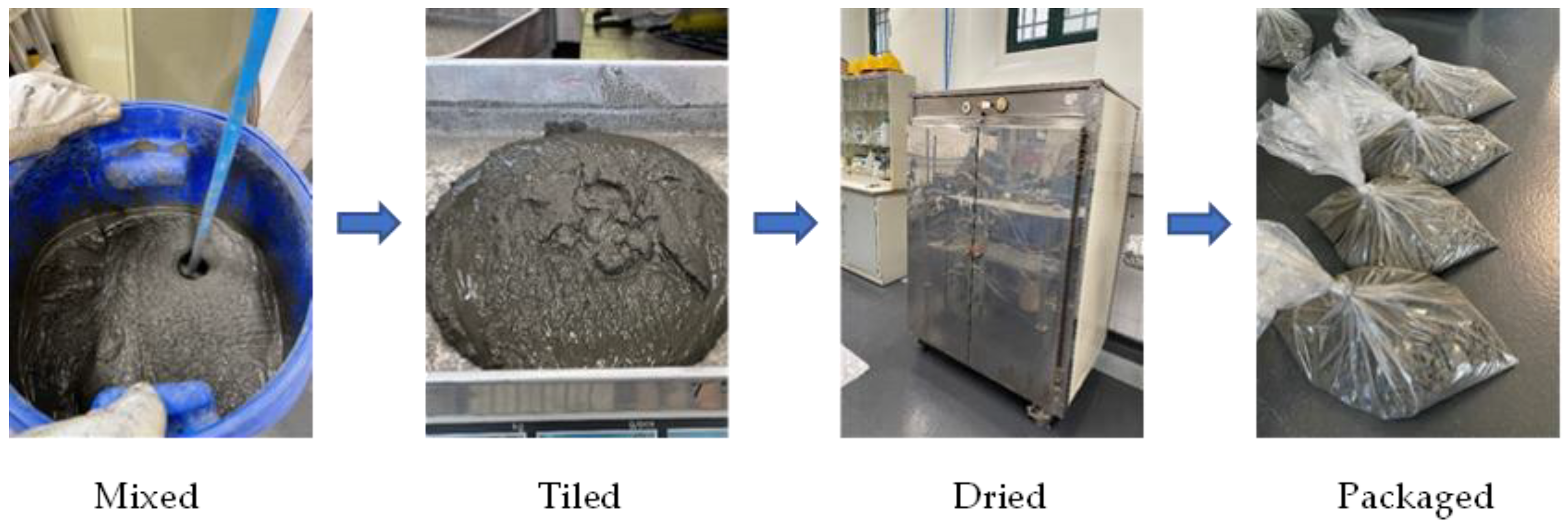
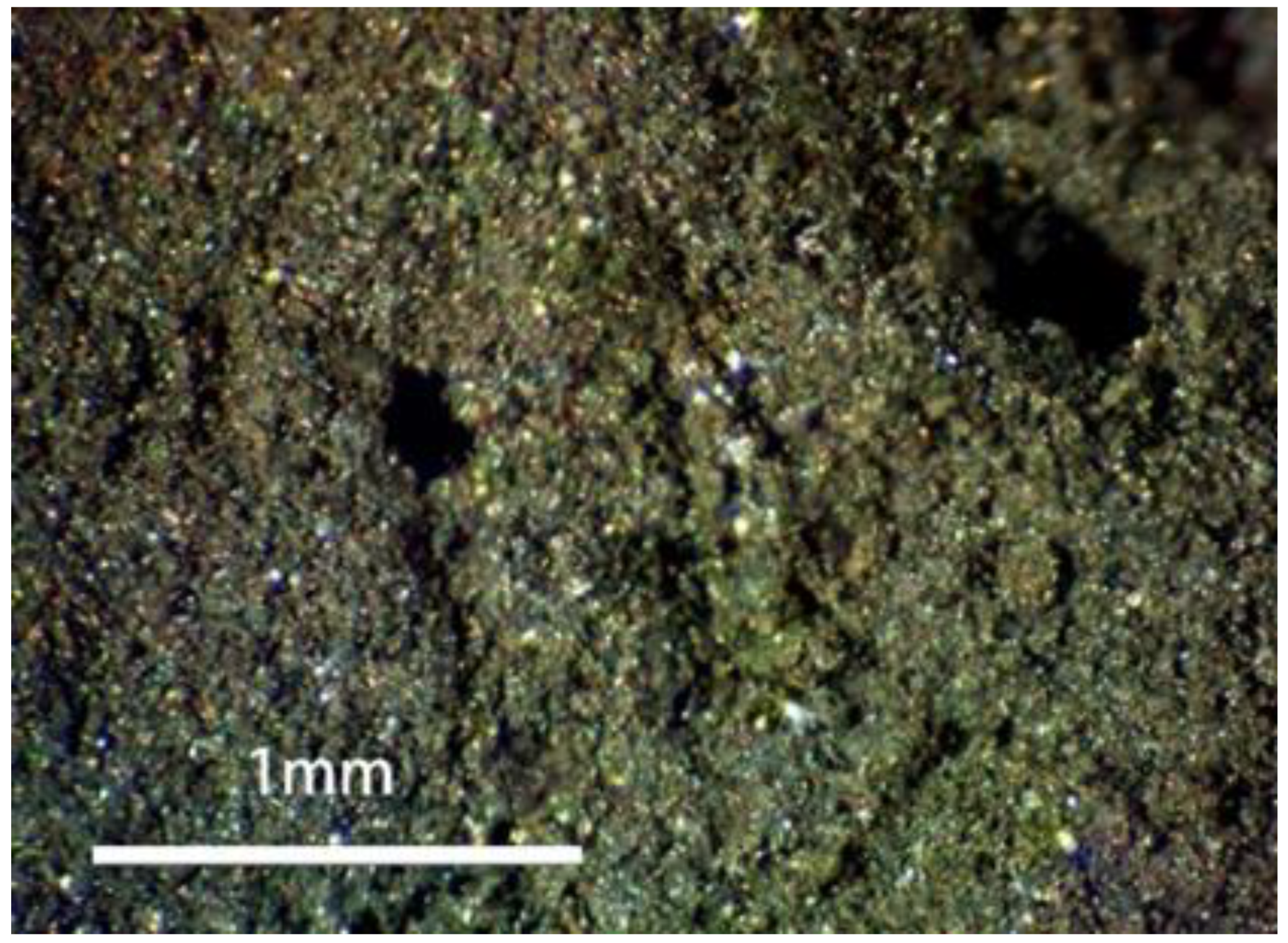

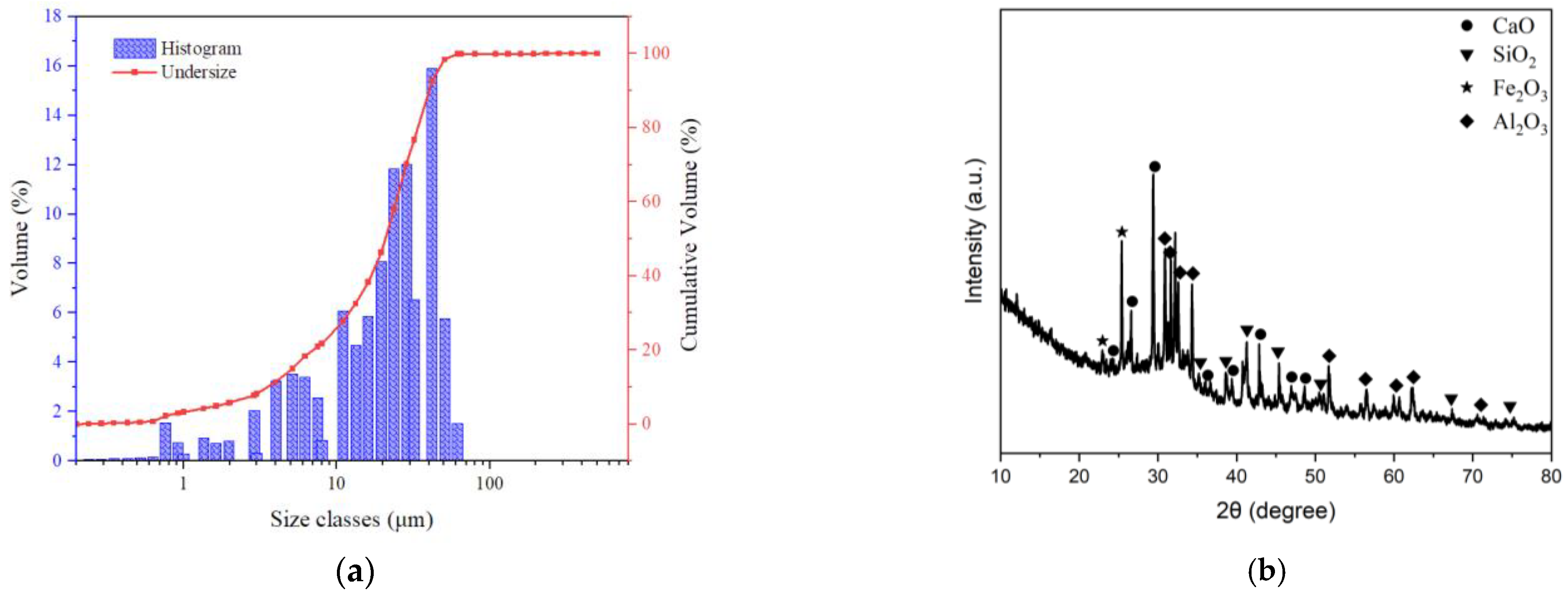
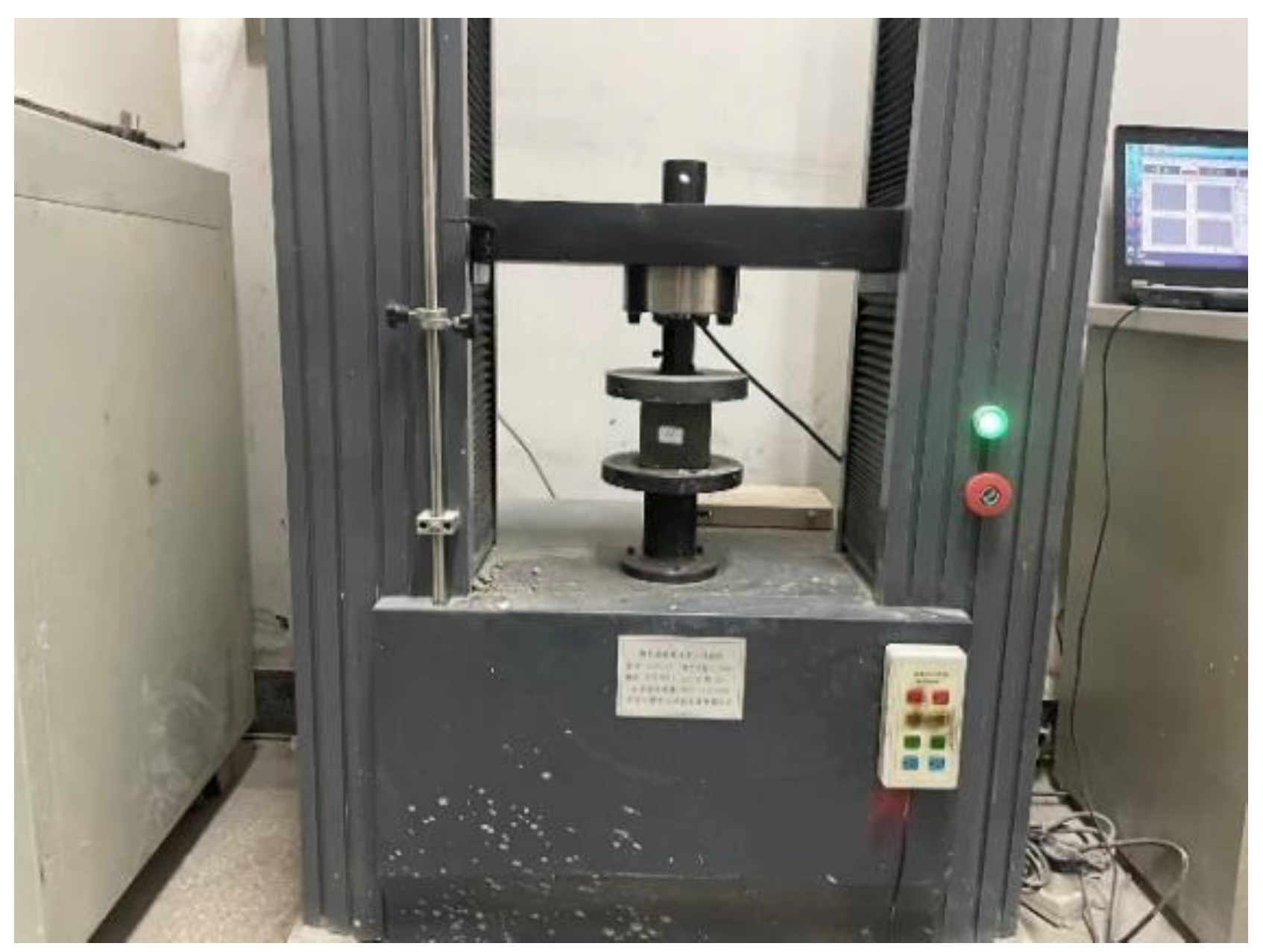
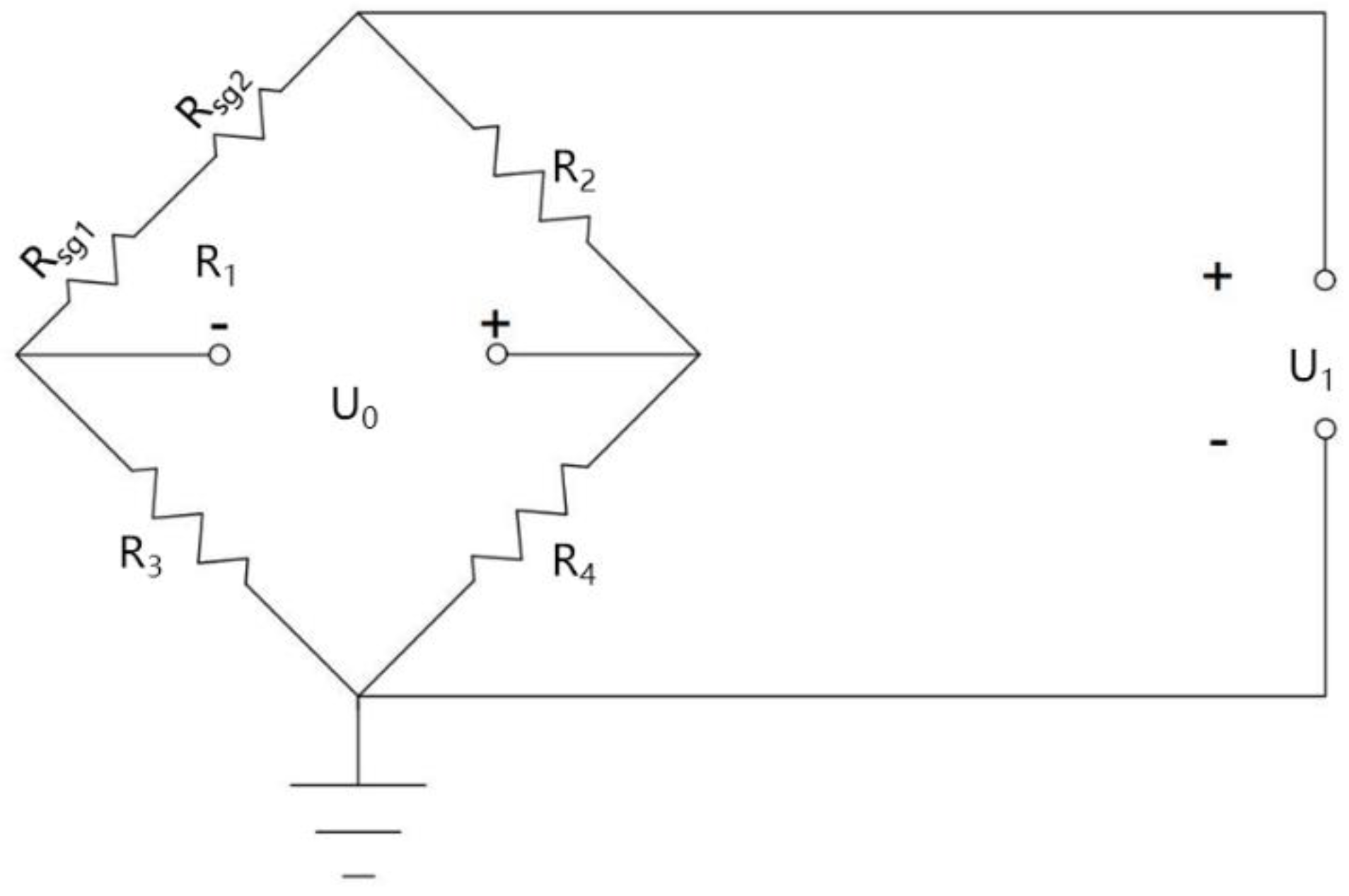
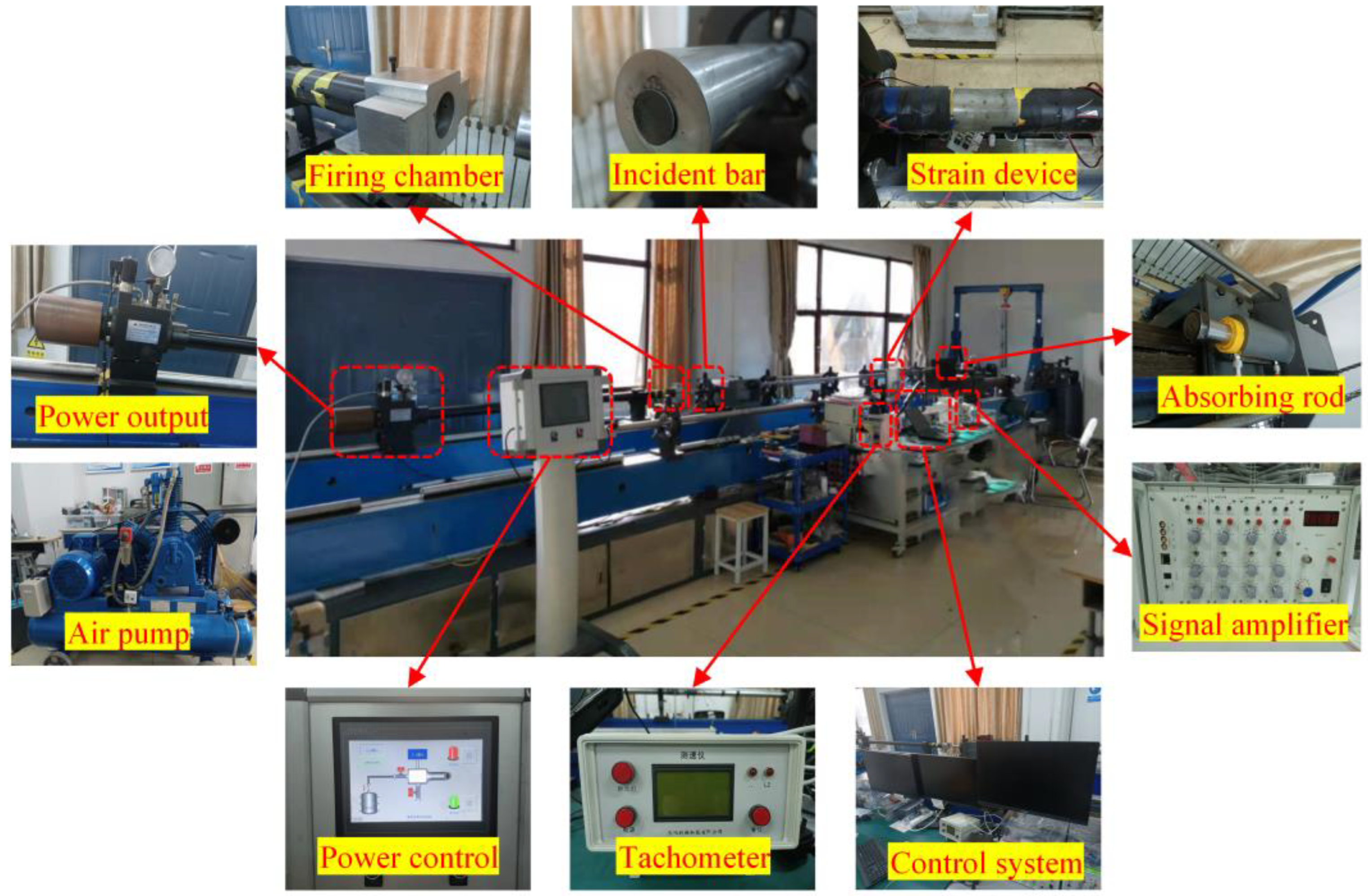

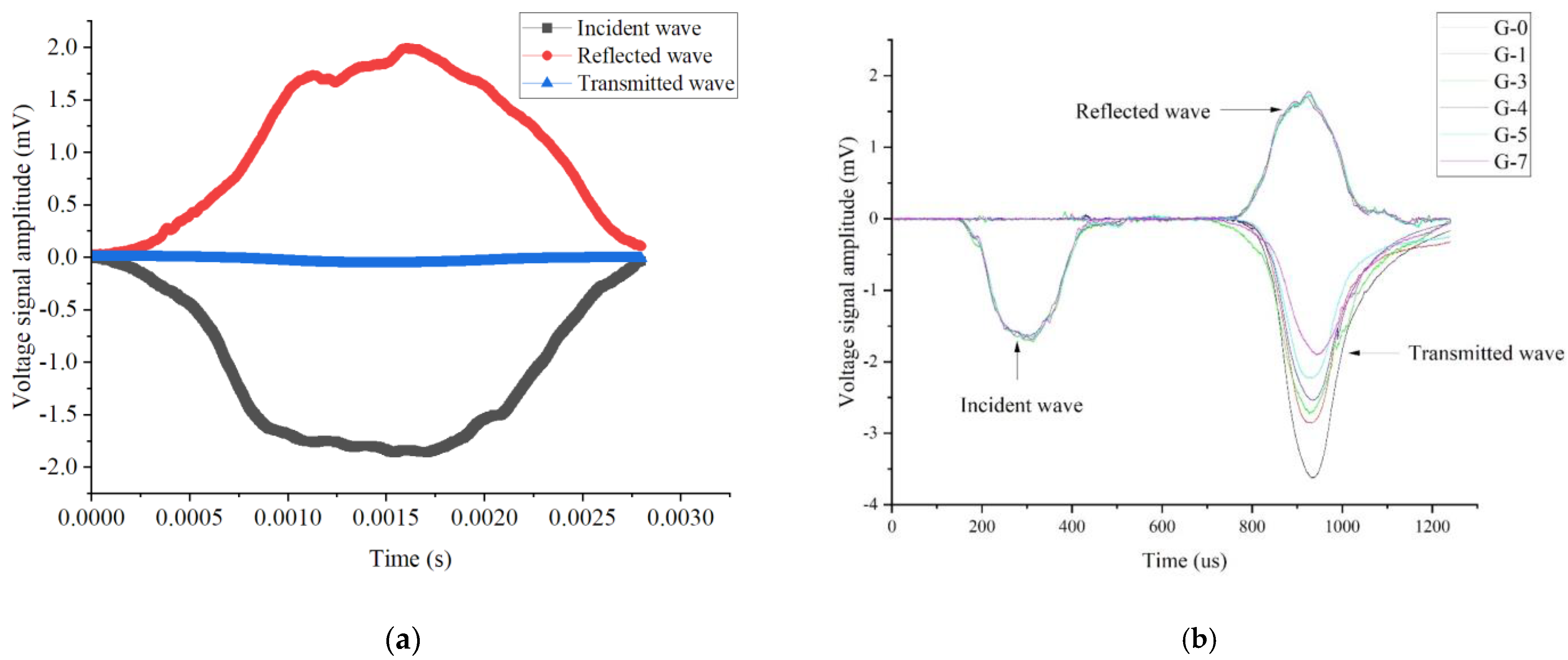


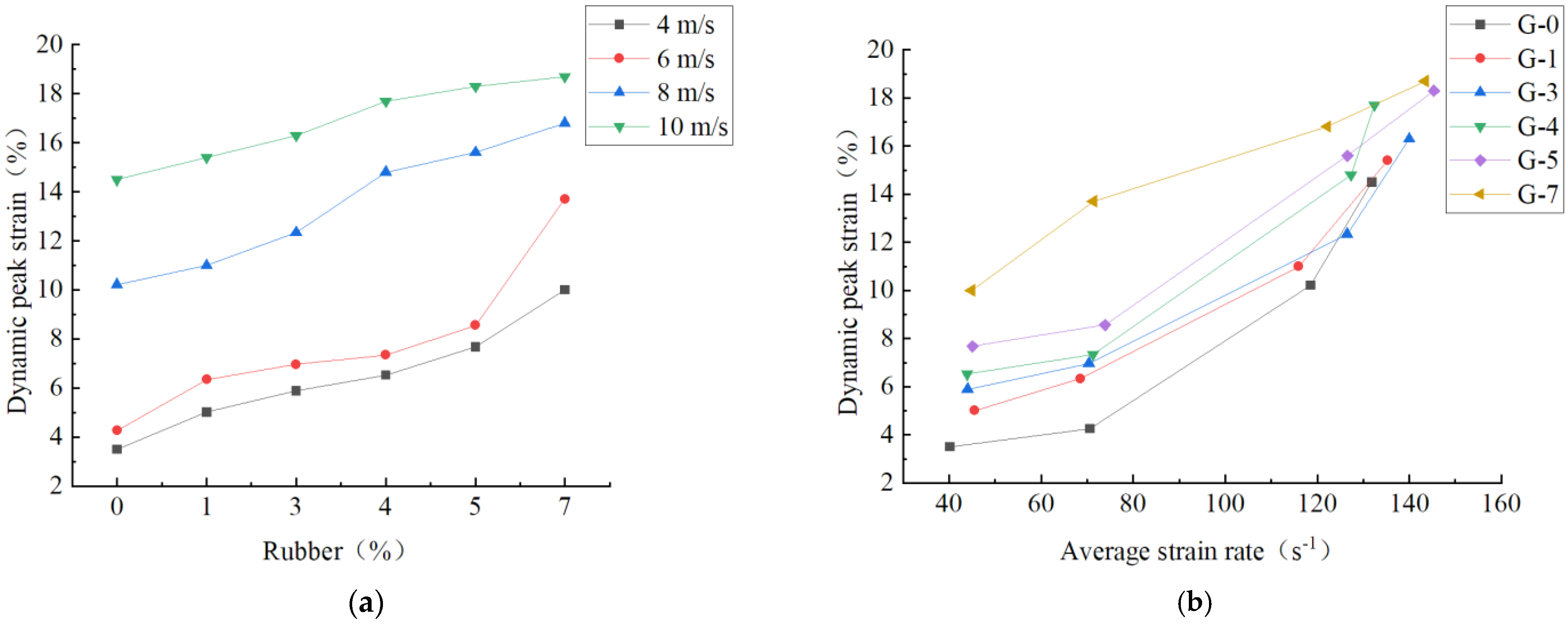
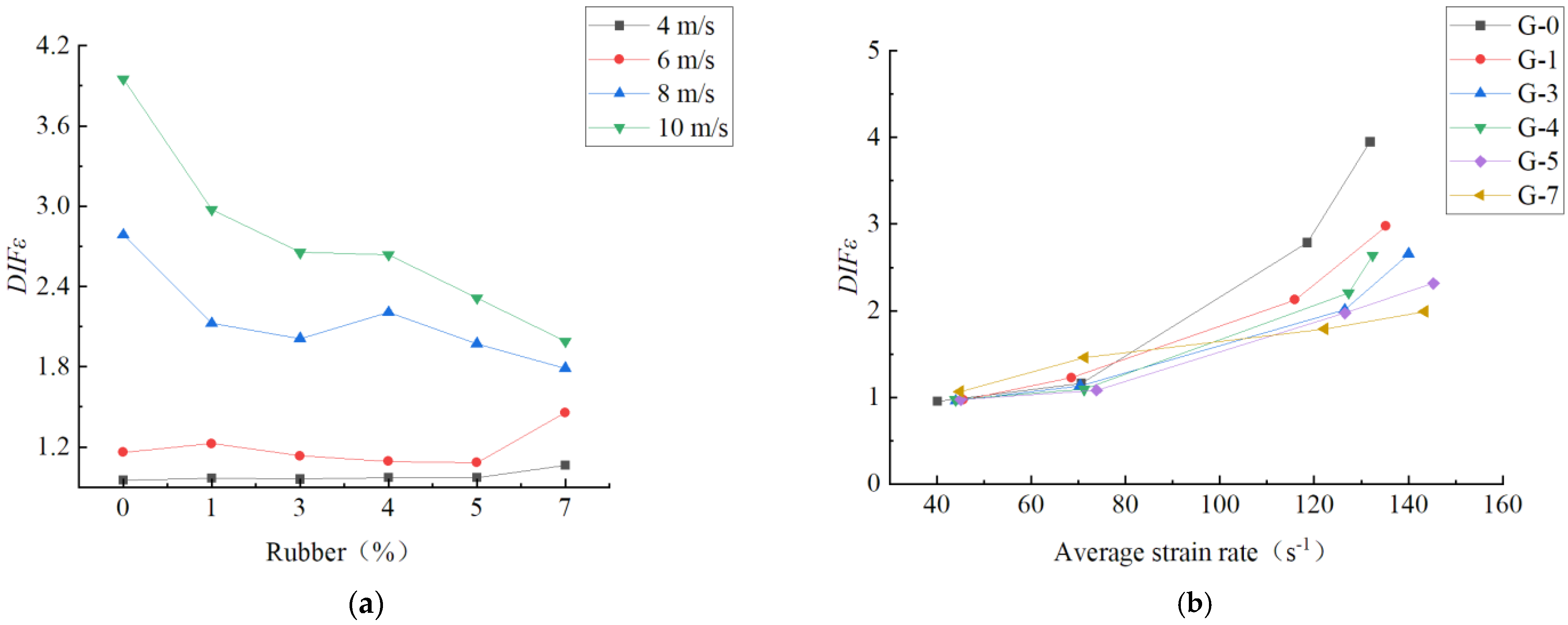
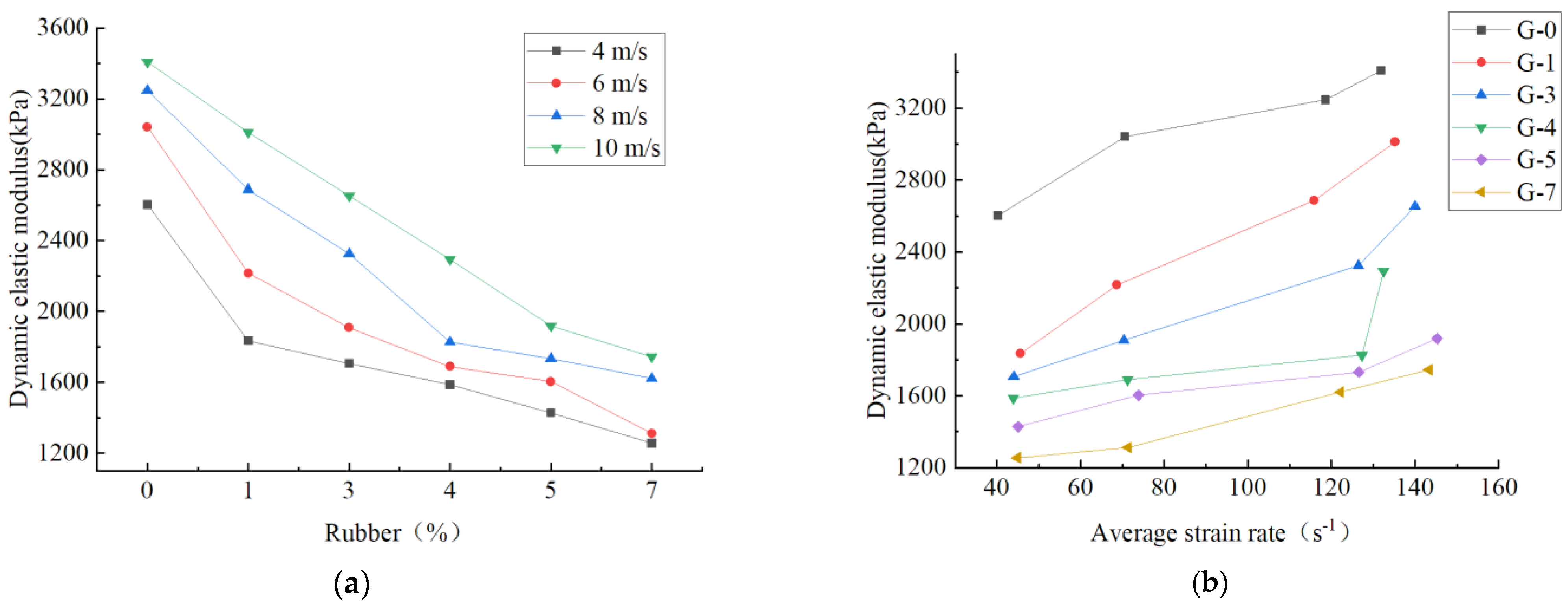
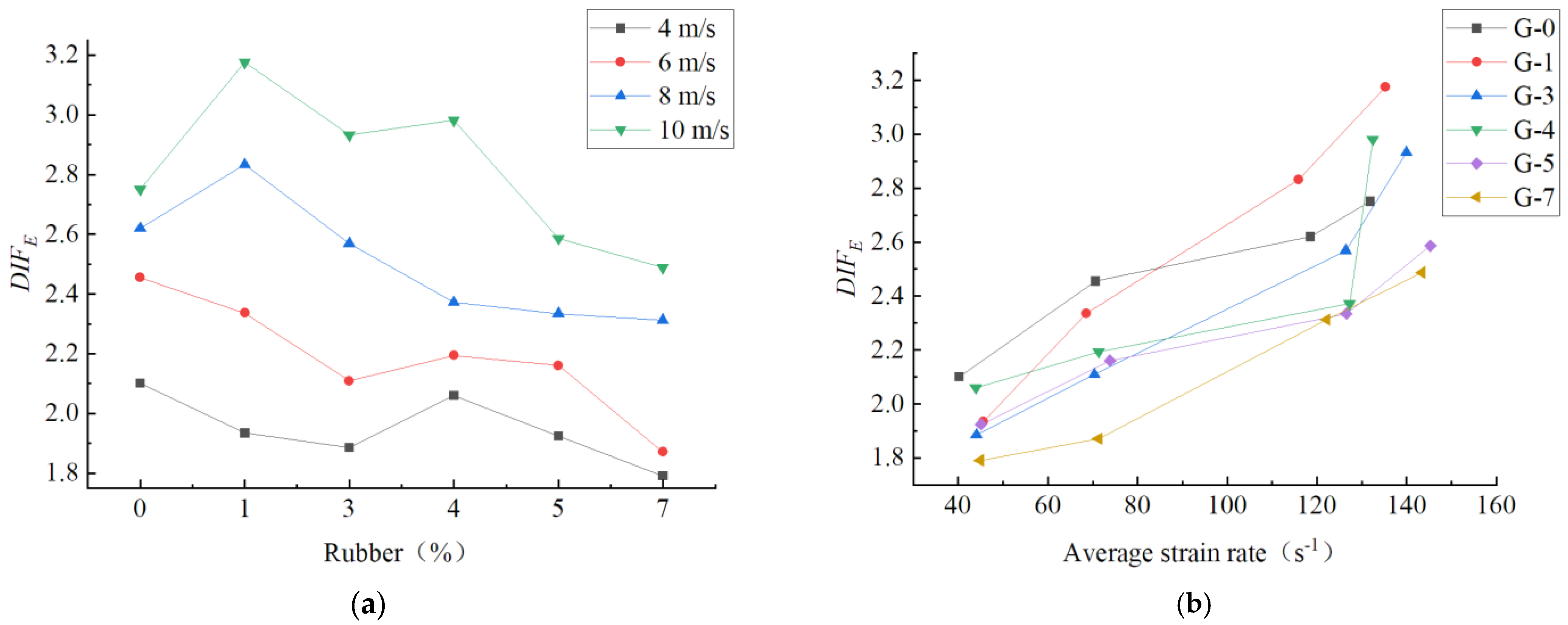
| Sieve (mm) | Minimum Portion of Retained Material (%) | Maximum Portion of Retained Material (%) |
|---|---|---|
| 1.65 | 0 | 5 |
| 0.5 | 30 | 50 |
| 0.3 | 30 | 50 |
| 0 | 10 | 47 |
| Groups | Rubber (%) | Cement (%) | Tailings (%) | Water (%) |
|---|---|---|---|---|
| G-0 | 0.0 | 5.0 | 95.0 | 26.2 |
| G-1 | 1.0 | 5.0 | 94.0 | 26.2 |
| G-3 | 3.0 | 5.0 | 92.0 | 26.2 |
| G-4 | 4.0 | 5.0 | 91.0 | 26.2 |
| G-5 | 5.0 | 5.0 | 90.0 | 26.2 |
| G-7 | 7.0 | 5.0 | 88.0 | 26.2 |
| Rubber (%) | Velocity of the Bullet (m∙s−1) | Average Strain Rate (s−1) | Dynamic Strength (MPa) |
|---|---|---|---|
| 0 | 4.062 | 40.16 | 1.43 |
| 6.122 | 70.61 | 1.87 | |
| 7.921 | 118.55 | 2.15 | |
| 9.451 | 131.89 | 2.98 | |
| 1 | 4.350 | 45.55 | 1.01 |
| 5.804 | 68.59 | 1.61 | |
| 7.822 | 115.96 | 1.95 | |
| 9.673 | 135.23 | 2.75 | |
| 3 | 4.219 | 44.03 | 0.90 |
| 5.894 | 70.36 | 1.57 | |
| 7.831 | 126.45 | 1.84 | |
| 9.961 | 140.01 | 2.62 | |
| 4 | 4.101 | 43.94 | 0.81 |
| 6.020 | 71.29 | 1.49 | |
| 7.974 | 127.32 | 1.76 | |
| 9.602 | 132.43 | 2.53 | |
| 5 | 4.216 | 45.06 | 0.76 |
| 6.157 | 73.86 | 1.25 | |
| 7.928 | 126.56 | 1.63 | |
| 9.996 | 145.32 | 2.30 | |
| 7 | 4.010 | 44.89 | 0.73 |
| 5.891 | 71.36 | 1.02 | |
| 7.898 | 122.2 | 1.58 | |
| 9.928 | 143.42 | 2.19 |
| Rubber (%) | (MPa) | Velocity of the Bullet (m/s) | Average Strain Rate (s−1) | (MPa) | DIF |
|---|---|---|---|---|---|
| 0 | 0.851 | 4.062 | 40.16 | 1.43 | 1.69 |
| 6.122 | 70.61 | 1.87 | 2.19 | ||
| 7.921 | 118.55 | 2.15 | 2.53 | ||
| 9.451 | 131.89 | 2.98 | 3.50 | ||
| 1 | 0.796 | 4.350 | 45.55 | 1.01 | 1.27 |
| 5.804 | 68.59 | 1.61 | 2.03 | ||
| 7.822 | 115.96 | 1.95 | 2.45 | ||
| 9.673 | 135.23 | 2.75 | 3.46 | ||
| 3 | 0.759 | 4.219 | 44.03 | 0.90 | 1.18 |
| 5.894 | 70.36 | 1.57 | 2.07 | ||
| 7.831 | 126.45 | 1.84 | 2.42 | ||
| 9.961 | 140.01 | 2.62 | 3.45 | ||
| 4 | 0.717 | 4.101 | 43.94 | 0.81 | 1.13 |
| 6.020 | 71.29 | 1.49 | 2.07 | ||
| 7.974 | 127.32 | 1.76 | 2.45 | ||
| 9.602 | 132.43 | 2.53 | 3.53 | ||
| 5 | 0.599 | 4.216 | 45.06 | 0.76 | 1.27 |
| 6.157 | 73.86 | 1.25 | 2.08 | ||
| 7.928 | 126.56 | 1.63 | 2.72 | ||
| 9.996 | 145.32 | 2.30 | 3.84 | ||
| 7 | 0.573 | 4.010 | 44.89 | 0.73 | 1.27 |
| 5.891 | 71.36 | 1.02 | 1.77 | ||
| 7.898 | 122.2 | 1.58 | 2.76 | ||
| 9.928 | 143.42 | 2.19 | 3.83 |
| Rubber (%) | Velocity of the Bullet (m/s) | Average Strain Rate (s−1) | Dynamic Peak Strain (%) | |
|---|---|---|---|---|
| 0 | 4.062 | 40.16 | 3.5 | 0.953494011 |
| 6.122 | 70.61 | 4.26 | 1.160538424 | |
| 7.921 | 118.55 | 10.22 | 2.784202511 | |
| 9.451 | 131.89 | 14.5 | 3.950189473 | |
| 1 | 4.350 | 45.55 | 5.01 | 0.968222587 |
| 5.804 | 68.59 | 6.34 | 1.225255729 | |
| 7.822 | 115.96 | 10.99 | 2.123905435 | |
| 9.673 | 135.23 | 15.4 | 2.976173221 | |
| 3 | 4.219 | 44.03 | 5.89 | 0.95937245 |
| 5.894 | 70.36 | 6.97 | 1.135284546 | |
| 7.831 | 126.45 | 12.34 | 2.009958579 | |
| 9.961 | 140.01 | 16.3 | 2.654969598 | |
| 4 | 4.101 | 43.94 | 6.53 | 0.973484837 |
| 6.020 | 71.29 | 7.34 | 1.094238699 | |
| 7.974 | 127.32 | 14.8 | 2.206366859 | |
| 9.602 | 132.43 | 17.7 | 2.638695501 | |
| 5 | 4.216 | 45.06 | 7.68 | 0.971326886 |
| 6.157 | 73.86 | 8.56 | 1.082624758 | |
| 7.928 | 126.56 | 15.6 | 1.973007736 | |
| 9.996 | 145.32 | 18.3 | 2.314489845 | |
| 7 | 4.010 | 44.89 | 10 | 1.064573856 |
| 5.891 | 71.36 | 13.7 | 1.458466183 | |
| 7.898 | 122.2 | 16.8 | 1.788484079 | |
| 9.928 | 143.42 | 18.7 | 1.990753111 |
| Rubber (%) | Velocity of the Bullet (m/s) | Average Strain Rate (s−1) | Dynamic Elastic Modulus (kPa) | |
|---|---|---|---|---|
| 0 | 4.062 | 40.16 | 2603 | 2.100887813 |
| 6.122 | 70.61 | 3042 | 2.455205811 | |
| 7.921 | 118.55 | 3246 | 2.619854722 | |
| 9.451 | 131.89 | 3409 | 2.751412429 | |
| 1 | 4.350 | 45.55 | 1835 | 1.934445676 |
| 5.804 | 68.59 | 2216 | 2.336093525 | |
| 7.822 | 115.96 | 2687 | 2.832618818 | |
| 9.673 | 135.23 | 3012 | 3.175231812 | |
| 3 | 4.219 | 44.03 | 1706 | 1.885476672 |
| 5.894 | 70.36 | 1908 | 2.10872772 | |
| 7.831 | 126.45 | 2324 | 2.568492254 | |
| 9.961 | 140.01 | 2653 | 2.93210411 | |
| 4 | 4.101 | 43.94 | 1586 | 2.060208216 |
| 6.020 | 71.29 | 1689 | 2.19400484 | |
| 7.974 | 127.32 | 1826 | 2.371967341 | |
| 9.602 | 132.43 | 2295 | 2.98119663 | |
| 5 | 4.216 | 45.06 | 1428 | 1.924551077 |
| 6.157 | 73.86 | 1603 | 2.160402925 | |
| 7.928 | 126.56 | 1732 | 2.33425943 | |
| 9.996 | 145.32 | 1919 | 2.586283976 | |
| 7 | 4.010 | 44.89 | 1255 | 1.790408602 |
| 5.891 | 71.36 | 1311 | 1.870299345 | |
| 7.898 | 122.2 | 1621 | 2.312551669 | |
| 9.928 | 143.42 | 1744 | 2.488025978 |
Disclaimer/Publisher’s Note: The statements, opinions and data contained in all publications are solely those of the individual author(s) and contributor(s) and not of MDPI and/or the editor(s). MDPI and/or the editor(s) disclaim responsibility for any injury to people or property resulting from any ideas, methods, instructions or products referred to in the content. |
© 2024 by the authors. Licensee MDPI, Basel, Switzerland. This article is an open access article distributed under the terms and conditions of the Creative Commons Attribution (CC BY) license (https://creativecommons.org/licenses/by/4.0/).
Share and Cite
Li, Y.; Wang, X.; Song, X.; Yang, J. Dynamic Loading Characteristics of Cemented Paste Backfill with Recycled Rubber. Minerals 2024, 14, 553. https://doi.org/10.3390/min14060553
Li Y, Wang X, Song X, Yang J. Dynamic Loading Characteristics of Cemented Paste Backfill with Recycled Rubber. Minerals. 2024; 14(6):553. https://doi.org/10.3390/min14060553
Chicago/Turabian StyleLi, Yang, Xiaolong Wang, Xiaobo Song, and Jie Yang. 2024. "Dynamic Loading Characteristics of Cemented Paste Backfill with Recycled Rubber" Minerals 14, no. 6: 553. https://doi.org/10.3390/min14060553





